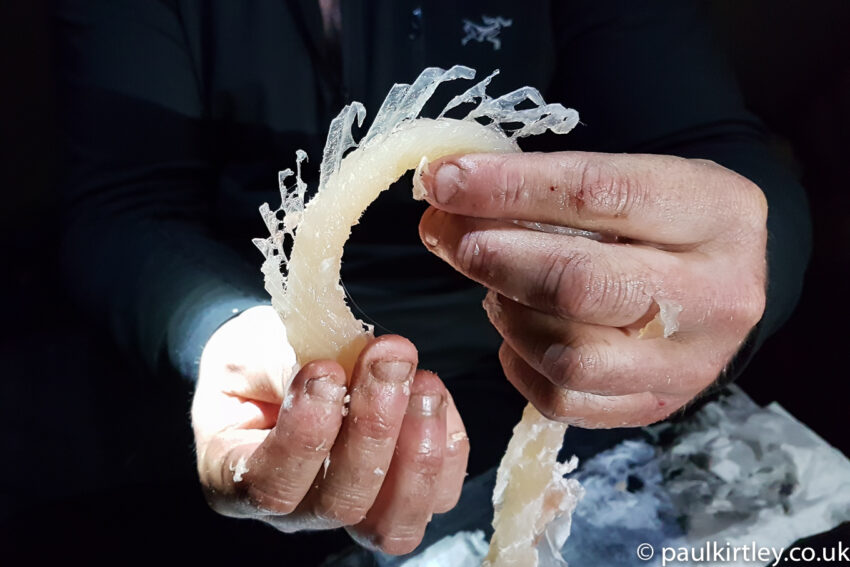
How To Fillet A Pike (And Remove All The Y-Bones)
On a recent winter camping trip in Canada (more on this in a later post) I was shown a really great way of filleting a pike.
If you’ve ever filleted a pike, or otherwise prepared a pike for eating, you’ll know these fish contain awkward Y-shaped bones that are hard to remove from the flesh.
The Three-Fillet Method For A Pike
In the past, when preparing a pike I have usually used the method of taking three bone-free strips off the fish, one from from the top and one from each side, avoiding the Y-bones and leaving them on the fish. I was shown this “three-fillet” method many years ago and I’m sure it is known to many. It’s quick and easy. But it can be quite wasteful, however, particularly on a bigger pike.
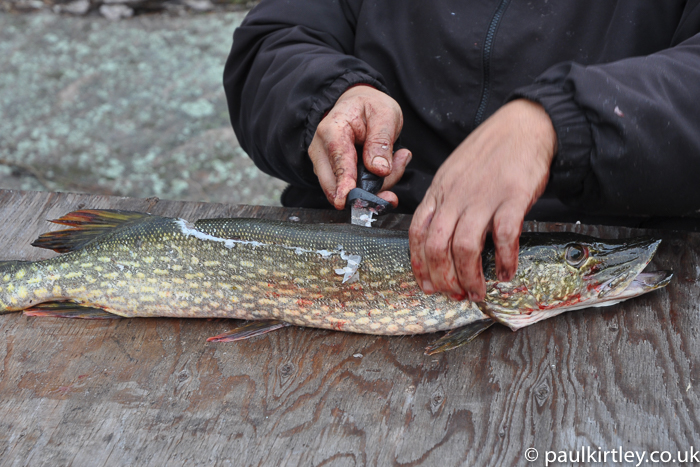
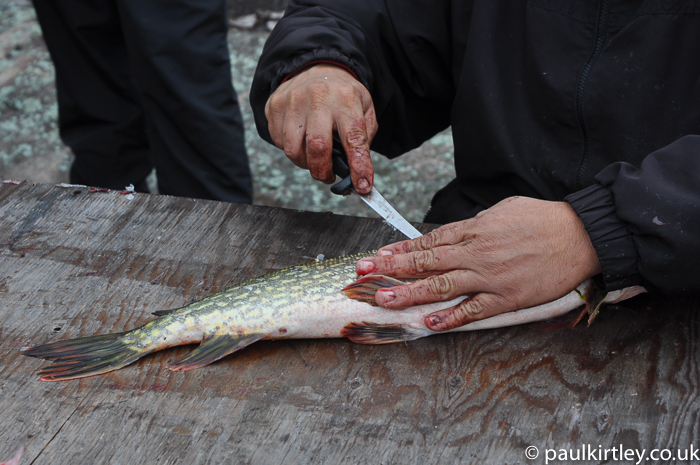

Is Pike Worth Eating, Though?
There is a misguided belief that pike is not good eating. Quite the contrary. All you need is some oil or butter, a bit of salt and pepper, along with a fry pan. Plus, the fish has given its life so you can eat. So, it’s worth making as much use of the fish’s flesh as possible.
An approach you can take to making the most of a pike is the Hugh Fearnley-Whittingstall approach, boiling a pike to make a terrine or jellied pike, as he does in one of the early episodes of River Cottage, and shown in the original River Cottage Cookbook. This is a nice method of using the whole fish if you have a country kitchen and the relevant implements but it’s not field expedient and certainly not practical for a summer canoe trip or a winter hot-tenting trip.
Ice Fishing For Pike
While in Canada, I was on a trip with Lure of the North, participating in their Life On The Trapline course. Jesse Hutchinson was our instructor and he was teaching us much about trapping (again, more on this at a later date). Jesse is also a prodigious fisherman.
Mid-week, we spent an afternoon ice fishing. David, one of the other guys on the course, caught a decent-sized pike.
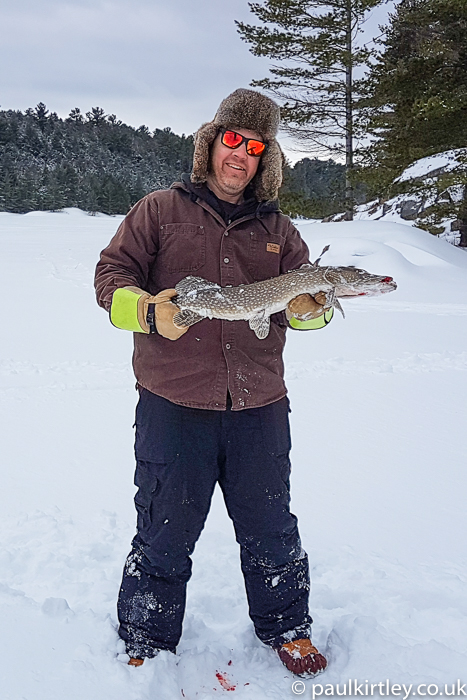
David’s acquisition of a northern pike provided a great opportunity for Jesse to later show us a superior method of filleting a pike.
The Best Way To Fillet A Pike (I have seen)
This method more carefully dismantles the fish than the three-fillet method, and tidily removes the Y-bones in the process. As a result, there is minimal waste of flesh. This is good ethically, as well as nutritionally.
Jesse showed us this method of filleting a pike using his bush knife and the underside of a toboggan, which he had brought into the Snowtrekker tent to use as his cutting board. It wasn’t the most level set-up but Jesse did a tidy job regardless. We sat on comfy boughs of balsam fir while we watched the demonstration, illuminating his workspace with our headlamps.
In this method, no top strip is taken. Rather, two side fillets are taken that are thicker than in the three-fillet method.
Then a series of neat and carefully-placed cuts allows each side fillet to be dismantled, with the Y-bones finally being removed, with only a small amount of flesh wasted.
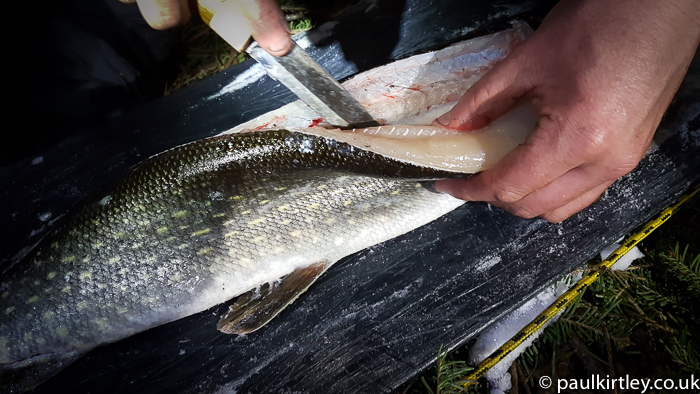
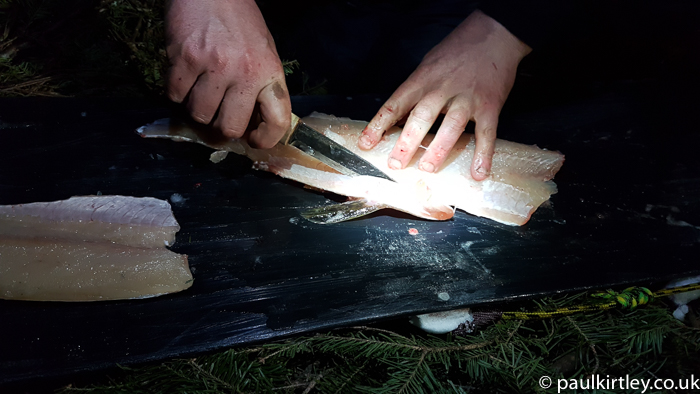
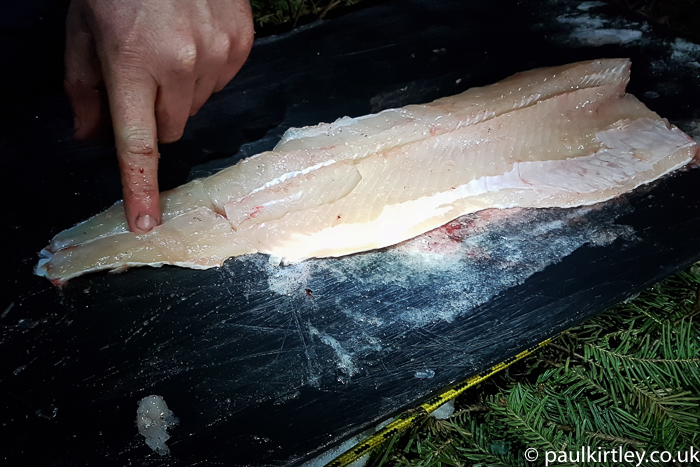
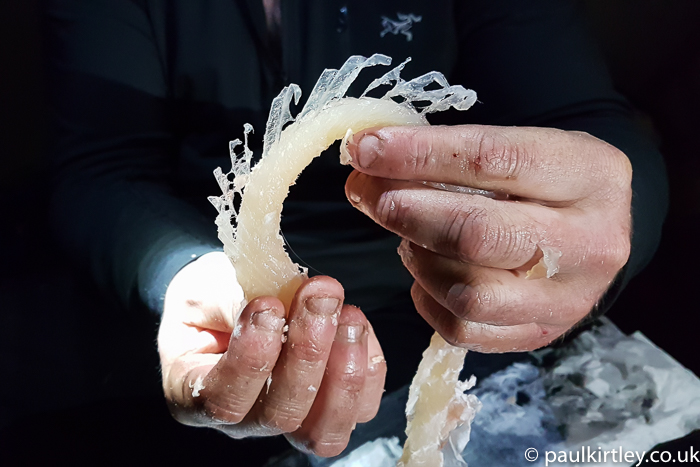
Watch A Video Of Jesse’s Pike Filleting Method
It was hard to capture every step of the process on a phone camera in a dark tent, as well as take in all the details that Jesse was describing.
Fortunately for all of us, Jesse has a video of the method, including all the techniques, on his YouTube channel, which is embedded below. It’s certainly worth 12 minutes of your time.
If you enjoyed this video, give Jesse a thumbs-up, and maybe even subscribe.
Plus let me know what you think of this article, any thoughts or observations you might have, in the comments section below.
You Might Also Enjoy
Ten Ways To Boost Your Bushcraft Skills Through The New Year
#AskPaulKirtley 77 – Moving From Survival To Bushcraft; Liner Management; Fishing Kit
6 thoughts on “How To Fillet A Pike (And Remove All The Y-Bones)”
The first fish I filleted was a big pike back in 1962. The fish was nearly as tall as I was. Pike is delicious. It was my mother’s favourite fish. If prepared properly, it is very tasty. We simply made fillets, without removing the bones at all. The fillet of the tail end was boneless, and the others, we learned to simply eat by forking from the belly side lengthwise, which exposed the bones. We simply took the bones out by hand, and ate the fish. Since then, I have learned the five fillet method, and I am keen to try this method. Thank you for sharing. And ‘y’ bones or not, pike is a delectable fish that should not be ignored as table fare.
Thanks for sharing. I imagine you had lots of pike at Lure of The North, didn’t you?
Marcel
Thanks for this Paul! I just came back from Lure’s winter survival course where we also caught a pike. Kie was eager to demonstrate Jesse’s method. I appreciate the video for reference! And pike is an amazing fish to eat!
Thank you for the article and demo on fleshing out a pike. Not many tackle this and it’s too bad. I am hoping a trip I have planned in May to a lake will yield a pike for me. So, this will come in handy!
Thank you, Paul.
Thanks for this, Paul. I have always considered pike to be an under-rated fish. There is no doubt that the y -bones put many people off. This looks like a very good method to use.
I agree, the smaller pike can be really good eating. But the larger pike suffers from being old, and being on the top of the food chain it can contain quite a lot of mercury and other poisons. So it’s advised not to eat too much of it. There’s also the issue of pike eating up all the other fish in the waters, and big, old pike eat up much of its smaller competion so there won’t be so many of them. So if I find one, I’d rather take a photo and let it back.
I eat all the smaller pike I can, though. Not bothering with filleting at all. Rather I rinse it, add salt, pepper and a bit of butter to its insides and grill it by the fire whole. The skin can take quite a lot of heat so the outside takes the brunt of it, and when it’s finished you can pick the meat off the bones and eat. You may end up filtering some bones out through your teeth, but they’re so soft it’s no danger, and I see it as a minor hassle for a good meal. For medium size pike, I could try this method as I never see any reason for wasting good food, but for the smaller pike I won’t bother.
Hi Paul.
Great video from Jesse, thanks for the link and have subscribed, this article shows what a great person you are, after many years of teaching outdoor skills and living outdoors the first thing you do when you learn something new is share it.
Many thanks my friend ☕️
Nige.